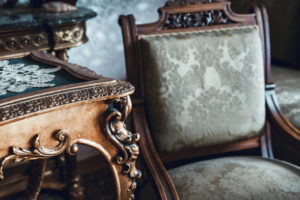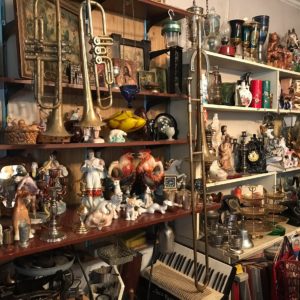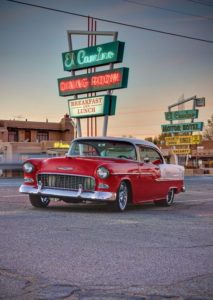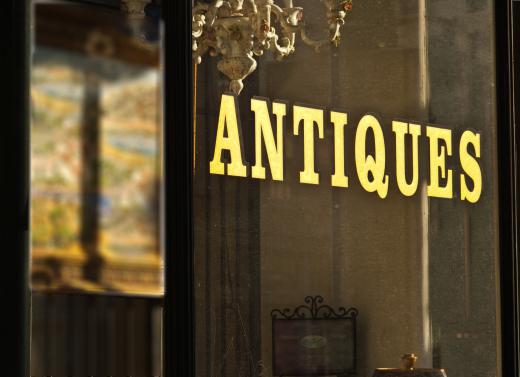What is the difference between vintage and antique?
Table of Contents
What is the difference between vintage and antique? Vintage is a term that is used to describe something that is old-fashioned, but still stylish. Antique, on the other hand, refers to an object that is at least 100 years old and has historical value. So, what determines whether something is considered vintage or antique? And why does it matter? Keep reading to find out!
There is often a lot of confusion between the words “vintage” and “antique.” While they both refer to older items, they have different meanings. An antique is something that is at least 100 years old, while vintage refers to something that is older, but not necessarily as old as an antique. There are also different ways of defining vintage. Some people might say that it applies only to clothing and accessories, while others might say that it can include furniture and other home decor items. Ultimately, it’s up to each individual to decide what qualifies as vintage in their eyes.
What Is An Antique?
An antique is an item that is at least 100 years old. Antiques can be furniture, art, dishes, toys, or anything else that has been around for a long time. Many people collect antiques because they are interested in the history of the piece. Others collect antiques because they are rare or valuable. Either way, collecting antiques can be a fun and rewarding hobby.
One of the most obvious features of an antique is its age. Antiques are typically at least 100 years old, and often much older. This means they have a history attached to them, which can add to their value. Another common feature of antiques is that they are made from high-quality materials. This could include things like solid wood, hand-blown glass or intricate metalwork. They are also often well-made, with attention to detail and craftsmanship that is not always seen in today’s mass-produced items. Antiques can be very beautiful, and sometimes even unique, which makes them highly sought-after by collectors.

Other features that can make an antique valuable include its provenance (or history of ownership), condition, rarity and desirability. Provenance can add to the value of an antique by showing that it has been owned by famous or important people in the past. Condition is also important, as an antique in good condition is likely to be more valuable than one that is damaged or worn. Rarity is another factor that can affect value, as items that are scarce are usually more valuable than those that are more common. And finally, desirability plays a role in determining value, as some antiques are simply more popular with collectors than others.
Though its origin is unknown, the history of the antique is rich and fascinating. Antiques are often seen as objects with great sentimental value, and they are often passed down through generations. Many people enjoy collecting antiques, and they can be found in a variety of places, including thrift stores, garage sales, and online auctions. The history of an antique can add to its value, and collectors often go to great lengths to research the history of their prized possessions.
When it comes to antiques, there is a lot of history that can be associated with them. For example, an antique piece of furniture may have been passed down through several generations of a family, or it may have been owned by someone who was very famous. Either way, there is usually a story behind an antique that makes it even more special.
How To Identify An Antique?
If you’re interested in collecting antiques, it’s important to be able to identify them. Here are a few tips on how to identify an antique:
– Look for signs of wear and tear. Antiques are usually well-worn, with visible signs of age and use.
– Inspect the construction. Antiques are often made with high-quality materials and craftsmanship.
– Check for hallmarks or signatures. Many antiques are stamped or signed by their maker.
– Research the piece. Antiques often have a history attached to them, so doing some research can be helpful in identifying them.
– Ask an expert. If you’re still unsure, it’s always a good idea to consult with an expert in the field.
There are a few key things to look for when trying to identify an antique.
First, you will want to look at the piece itself. Is it well-made? Does it have intricate details or carvings? These are all signs that the piece is an antique.
Another thing to look for is the patina. This is the natural aging of the wood or metal over time, and it can be a good indicator of age.
Finally, you can also try looking for a maker’s mark or stamp on the piece. This can sometimes be found on the back or bottom of the piece, and it can help to date the piece.
By following these steps, you should be able to get a good idea of whether or not a piece is an antique.

What Is Vintage?
What is vintage? Vintage refers to items that are at least 20 years old. Items that are vintage are often considered to be valuable or collectible. They may be sought after by people who appreciate their history or style. Vintage items can be found in a variety of places, including thrift stores, garage sales, and online auctions. When shopping for vintage items, it’s important to inspect them carefully to ensure they are in good condition. It’s also a good idea to research the item beforehand to get an idea of its value.
A vintage is a piece of clothing or jewelry that is at least 20 years old. A vintage item is often considered to be high quality and stylish. Vintage items are often sought after by collectors and fashion enthusiasts. Some features of a vintage item may include:
– high quality materials
– intricate designs
– attention to detail
– unique style
– historical value
What features make something vintage? This is a difficult question to answer, as the term “vintage” can mean different things to different people. In general, though, vintage items are usually at least 20 years old and often have a classic or retro style. Vintage items can be found in a variety of places, including thrift stores, antique shops, and online marketplaces.
When shopping for vintage items, it’s important to inspect them closely to ensure that they’re in good condition. Vintage pieces that are well-made and well-cared-for can last for many years, but those that are poorly made or have been neglected may not stand the test of time. It’s also important to be aware of reproductions masquerading as genuine vintage items. With a little research and careful shopping, you can find beautiful, unique, and timeless vintage pieces to add to your collection.
Vintage fashion is a style that is typically associated with clothing that is at least 20 years old. However, in recent years, the definition of vintage has been expanded to include clothing that is simply no longer made or readily available. This means that even clothing from the 1990s or early 2000s can be considered vintage.
There are a few reasons why people might choose to wear vintage clothing. For some, it is a way to stand out from the crowd and express their unique sense of style. Others might choose vintage clothing because they appreciate the history and craftsmanship of older garments. And finally, some people might prefer vintage clothing simply because it is more affordable than buying new clothes.

Whatever the reason, vintage fashion is sure to turn heads and start conversations. So if you’re looking to make a statement or just want to find some unique clothing, be sure to check out your local vintage shops!
Tips For Identifying A Vintage
If you’re interested in vintage clothing, then you’ll need to know how to identify a genuine piece. Here are some tips to help you out:
1. Check the fabric. Vintage clothing is often made from natural materials like wool, cotton, and linen. If the item you’re looking at is made from synthetic fabrics like polyester or nylon, it’s probably not vintage.
2. Look at the construction. Vintage clothing is usually well-constructed, with attention to detail paid to things like seams and hems. If an item looks poorly made, it’s probably not vintage.
3. Check the labels. Genuine vintage clothing will often have labels from iconic designers or manufacturers. If an item doesn’t have a label, or has a label you’ve never heard of, it’s probably not vintage.
4. Consider the condition. Vintage clothing is often well-preserved, but it may show signs of wear from age. If an item looks like it’s in perfect condition, it might be a reproduction.
5. Ask an expert. If you’re still unsure about an item, take it to a reputable vintage clothing store or dealer for help. They should be able to tell you for sure whether or not it’s genuine vintage.

What is the difference between Vintage and antique?
Vintage means that an item was produced during a specific time period. Antique means that an item is at least 100 years old. So, an antique piece of furniture would be over 100 years old, while a vintage piece of furniture might be from the 1950s or 1960s.
Vintage refers to items that are at least 20 years old, while antiques are at least 100 years old. Vintage items may be either used or new, while antiques are always considered used. Vintage items are often sought after for their style or rarity, while antiques are usually prized for their history and uniqueness.
The main difference between vintage and antique furniture is their age. Antique furniture is at least 100 years old, while vintage furniture is at least 20 years old. However, age isn’t the only factor that distinguishes these two types of furniture.
One of the most important features of vintage furniture is its style. This type of furniture was made during a specific time period, which gives it a unique look that can’t be found in modern pieces. Vintage furniture is often characterized by its intricate details and craftsmanship.
Another key difference between vintage and antique furniture is their condition. Since vintage furniture is relatively new, it’s often in better condition than antique furniture. Antique furniture, on the other hand, is more likely to show signs of wear and tear.
If you’re looking for unique, one-of-a-kind pieces, vintage furniture is a great option. However, if you want furniture that will last for generations, antique furniture is the way to go.
FAQs
1. What is the definition of vintage?
Vintage refers to items that are at least 20 years old but less than 100. Anything older than 100 years is considered antique.
2. What should I look for when buying vintage jewelry?
When inspecting vintage jewelry, pay close attention to the condition of the metal and stones. If the metal is severely tarnished or the stones are loose, it is likely not worth as much as a piece in better condition.
3. What is the difference between vintage and antique furniture?
Antique furniture is at least 100 years old while vintage furniture is less than 100 years old but still considered older than most mass-produced furniture from today.
4. I found an old painting at a garage sale. How can I tell if it’s valuable?
There are a few ways to determine the value of an old painting. First, look for any signatures or dates on the piece. If it is signed by a well-known artist, it could be worth more. Also, check the condition of the painting; if it is in good condition, it is likely to be more valuable than one that is in poor condition. Finally, consult with an expert for a professional opinion.
5. What are some tips for caring for vintage clothing?
To properly care for vintage clothing, you should first have it dry cleaned or laundered by a professional. You should also be careful when storing the clothing; use acid-free hangers and store in a cool, dark place to prevent fading or damage. Finally, be sure to repair any tears or holes as soon as possible to preserve the value of the piece.
Conclusion
The definition of vintage is “a term used to indicate that a product is in the style of an earlier period, but not necessarily old or antique.”
-The definition of antique is “an object that has been valued for its age and beauty since it was first made.” So what’s the difference? The main difference between vintage and antique items are their value. Vintage items are generally considered less valuable than antiques because they were mass-produced. Antiques are rarer, so they tend to be more expensive.
There is no definitive answer to this question, as the terms are often used interchangeably. Generally speaking, though, “vintage” refers to items that are 20 years or older, while “antique” generally means something that is at least 100 years old.
-There are many factors that contribute to an item being classified as vintage or antique, including rarity and condition. The age of an item is not always the deciding factor. For example, a 50-year-old chair may be considered more valuable than a 100-year-old chair if it’s in better condition.
-When selling vintage or antique items, it’s important to understand what makes them unique and how to price them accordingly. It’s also important to remember that
Related posts:
Where to sell antique furniture near me?

